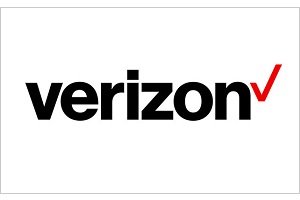Verizon recently established connections and passed data over multiple network slices in a completely commercial 5G environment. Network slicing allows customers to send their traffic over virtual end-to-end networks tailored to specific application requirements, while optimising network performance to support all services.
This capability, designed for network traffic on Verizon’s new cloud-native, containerised, virtualised standalone 5G core, will offer levels of service agility, flexibility, and automated scalability.
“Matching network performance characteristics to specific application requirements, network slicing promises differentiated customer experiences to efficiently provide our customers with the type of service they need to complete the task they want to complete on our network and provide them an exceptional experience,” says Adam Koeppe, senior vice president of technology planning at Verizon.
The recent demonstration registered a 5G smartphone to multiple network slices and passed data through the entire network. The demonstration used a commercially available smartphone, virtualised and non-virtualised RAN (radio access network) equipment in production in the field, and Verizon’s multi-vendor 5G standalone core.
This end-to-end test accessed network slicing capabilities from the device and validated the ability for the device chipset, operating system, application, radio network base station, and the core of the network to work in harmony to demonstrate a full end-to-end path for data to travel on a virtual network slice. Network slicing will be made available with the evolution of Verizon’s 5G standalone core. In order to take advantage of this network functionality, customers must have 5G network slicing capable devices.
What is network slicing?
This 5G capability uses a virtualised network infrastructure to match network performance characteristics to specific application requirements, while optimising the network performance to support all services. The advanced capabilities, high speed, increased bandwidth, and low latency of 5G is inspiring development of a wide variety of new use cases that include everything from numbers of IoT devices that use very few network resources, to smartphone applications that use data in countless ways, to more complex solutions such as gaming, AR/VR (augmented reality and virtual reality) and mixed reality that will require massive computing capabilities and low latency on the edge of the network. Those solutions would each benefit from different combinations of network capabilities.
The 5G standalone core’s cloud-native virtualised applications, in combination with built-in artificial intelligence (AI) and machine learning (ML), will enable the allocation of the appropriate resources, referred to as network slicing. It will also allow for automated network configuration changes, including the ability to scale up or scale down network function capacity in real time – to provide the right service levels and network resources needed for each use case.
For example, utility company smart readers use very little bandwidth, are not latency sensitive, and do not need mobility routing functions as they are in a fixed position attached to homes and do not move. This use case would require fewer network resources. Alternatively, massive multi-player online gaming in a mobile environment would benefit from certain upload and download speeds and low latency to work effectively and provide players an experience on a mobile device.
In each case, using network slicing, Verizon would be able to better match network performance to application requirements. In short, network resource provisioning allows the network to support the experience a customer should get for the applications they are using and provide that specific service level when resources are available.
Comment on this article below or via Twitter: @VanillaPlus OR @jcvplus






